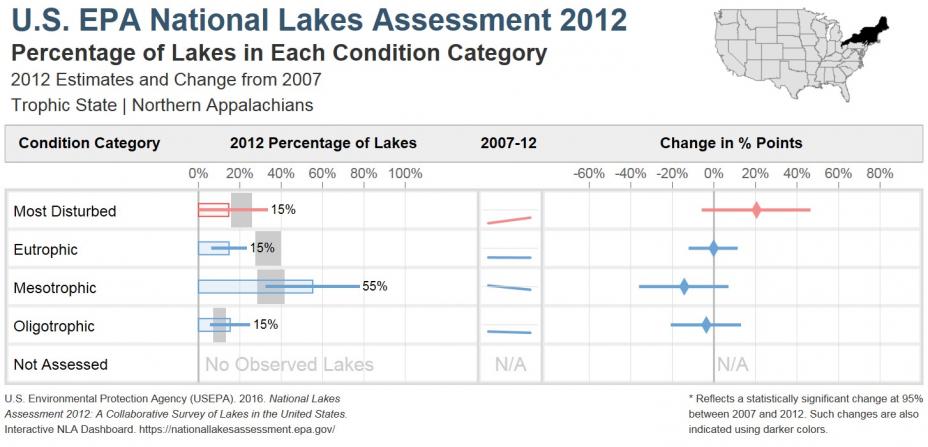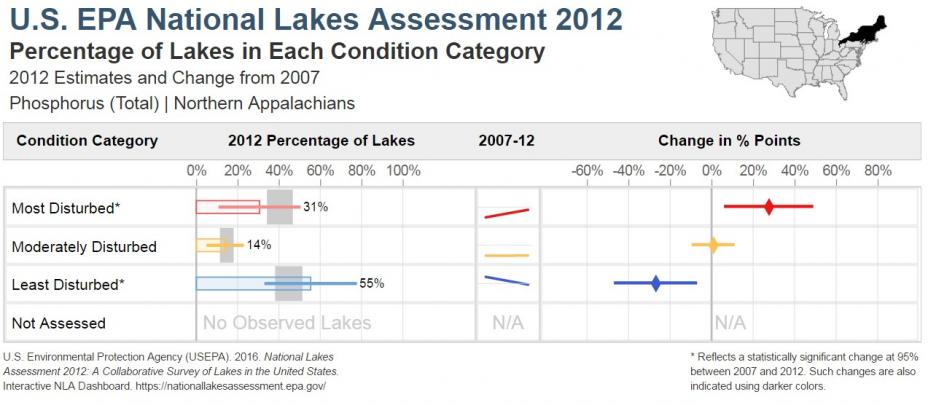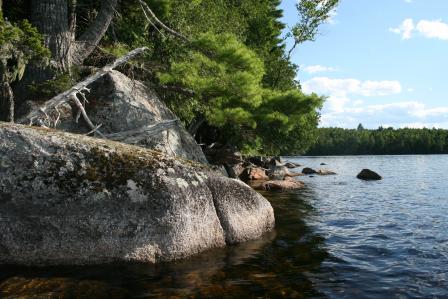Northern Appalachians Ecoregion - National Lakes Assessment 2012 Results
Key Results
A total of 15,634 lakes in the Northern Appalachians ecoregion are represented in the NLA. Of these lakes, 74% are natural and 26% are man-made.
The NLA uses trophic state as an important indicator of lake condition and assesses the extent of key stressors in the nation’s lakes.
- In the Northern Appalachians, 15% of lakes are rated as most disturbed based on trophic state, 15% are eutrophic, 55% are mesotrophic, and 15% are oligotrophic.
- The most widespread stressors assessed are phosphorus (31% of lakes), nitrogen (22%), and riparian vegetation cover (21%).
Trophic State

Indicator with the Highest Percentage of Lakes in the Most Disturbed Condition: Phosphorus

 Pleasant Lake, located in the Northern Appalachians ecoregion, was sampled during the NLA 2012. Photo: Hilary Snook, EPA.
Pleasant Lake, located in the Northern Appalachians ecoregion, was sampled during the NLA 2012. Photo: Hilary Snook, EPA.
Human Use Condition
Cyanobacteria is one of three algal toxin related indicators presented in the NLA (see also chlorophyll a and microcystins). It serves as a proxy for the presence of algal toxins.
-
Based on cyanobacteria cell counts, 2% of lakes in the Northern Appalachians are in the most disturbed condition (i.e., pose a high risk of exposure to algal toxins).
Change from 2007 (for lakes >4 hectares)*
- For the Northern Appalachians, the NLA reports an increase of 27% in the proportion of lakes in the most disturbed condition for phosphorus between 2007 and 2012.
- There was also a decrease of 27% in the proportion of lakes in the most disturbed condition based on the lake drawdown exposure indicator.
To access more indicator graphics please visit the interactive NLA Dashboard.
* The change analysis is based on information from two points in time – 2007 and 2012. The change in condition analysis only considers lakes 4 hectares and larger because smaller lakes were not sampled in 2007.
